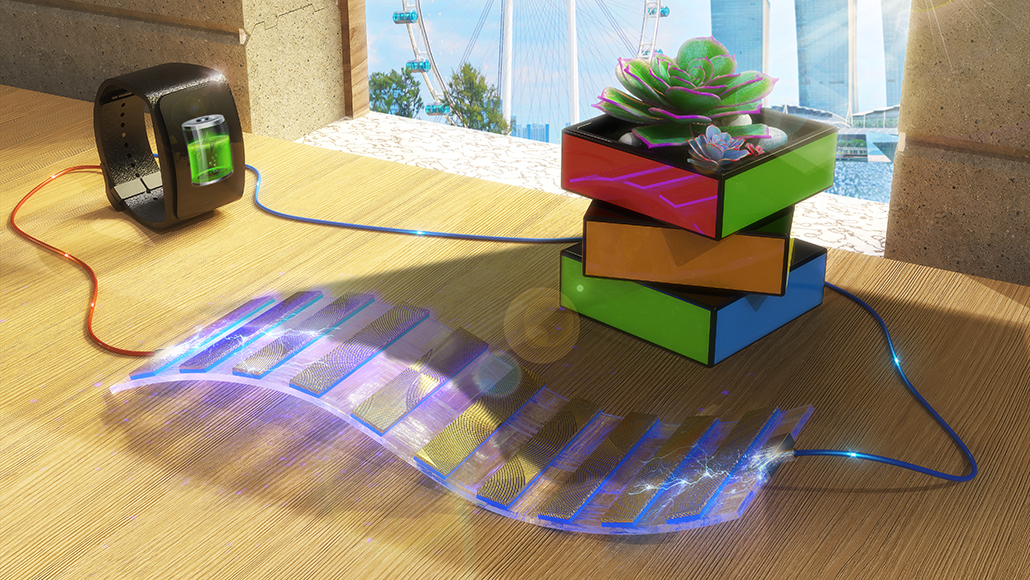
Shadow-effect energy generators, like the one illustrated here, could someday be used to produce power from the difference between bright spots and shady areas. The greater the contrast between light and dark, the more energy such generators provide.
Royal Society of Chemistry